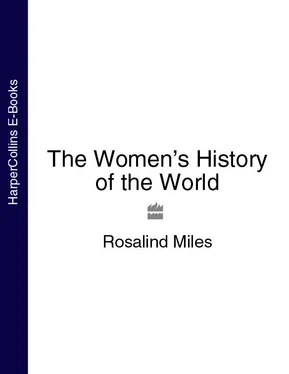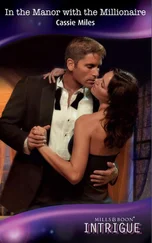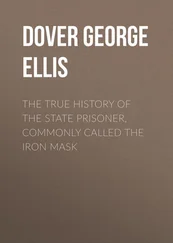Rosalind Miles - The Women’s History of the World
Здесь есть возможность читать онлайн «Rosalind Miles - The Women’s History of the World» — ознакомительный отрывок электронной книги совершенно бесплатно, а после прочтения отрывка купить полную версию. В некоторых случаях можно слушать аудио, скачать через торрент в формате fb2 и присутствует краткое содержание. Жанр: unrecognised, на английском языке. Описание произведения, (предисловие) а так же отзывы посетителей доступны на портале библиотеки ЛибКат.
- Название:The Women’s History of the World
- Автор:
- Жанр:
- Год:неизвестен
- ISBN:нет данных
- Рейтинг книги:5 / 5. Голосов: 1
-
Избранное:Добавить в избранное
- Отзывы:
-
Ваша оценка:
- 100
- 1
- 2
- 3
- 4
- 5
The Women’s History of the World: краткое содержание, описание и аннотация
Предлагаем к чтению аннотацию, описание, краткое содержание или предисловие (зависит от того, что написал сам автор книги «The Women’s History of the World»). Если вы не нашли необходимую информацию о книге — напишите в комментариях, мы постараемся отыскать её.
The Women’s History of the World — читать онлайн ознакомительный отрывок
Ниже представлен текст книги, разбитый по страницам. Система сохранения места последней прочитанной страницы, позволяет с удобством читать онлайн бесплатно книгу «The Women’s History of the World», без необходимости каждый раз заново искать на чём Вы остановились. Поставьте закладку, и сможете в любой момент перейти на страницу, на которой закончили чтение.
Интервал:
Закладка:
But one thing is certain: that any such object, along with other examples of early woman’s technology, would not have survived. Even if it had, would it have been deemed worthy of attention? Wide-ranging consideration at every level from academic investigation to wild surmise has been devoted to all aspects of the life of early man. But no attention in either scholarly or popular work has been given to what anthropologist Donald Johanson, discoverer of the early female hominid ‘Lucy’, dismissed as ‘the oestrus argument’ – that is, the importance of the female’s biological shift to menstruation. As Johanson explained, ‘I don’t believe anything I can’t measure, and I’ve never seen an oestrus fossil.’ 20Well, he wouldn’t, would he?
Like Johanson, generations of male commentators have blinded themselves both to the facts and the significant implications of the evolution of early woman. They have insisted instead on rewriting primitive woman as no more than a sexual vehicle for man. ‘They were fatted for marriage, were these Stone Age squaws,’ wrote H. G. Wells. ‘The females were the protected slaves of the old male, the master of all the women’ – a wistful Wellsian fantasy of women on tap. 21For Robert Ardrey, menstruation only evolved as a bonanza for the boys. When a female primate came on heat, burbled Ardrey, she ‘hit the sexual jackpot’, providing ‘fun for all . . . and for herself a maximum of male attention.’ 22But oestrus episodes are brief and infrequent – there had to be something more to bring the hunter home from the hill. Accordingly, the first woman learned to convert primate heat into menstruation. This made her sexually available and receptive to man all the year round, as a reward for her share of his kill, in history’s first known example of the time-honoured convention of quim pro quo .
The ‘fun for all’ theory of women’s early sexual evolution also accounts for the physical arrangement of the modern woman’s body. When Man the Hunter began to walk upright, he naturally wanted frontal sex. As Desmond ‘Naked Ape’ Morris so engagingly explains, woman obliged this desire ‘to make sex sexier’ by growing breasts. Realizing that her ‘pair of fleshy hemispherical buttocks’ were now quite passé as a means of attracting men’s attention, she ‘had to do something to make the frontal region more stimulating’. 23Any connection between the increase in woman’s breast size and the increasing size of the human baby at birth must have been purely coincidental.
For in this androcentric account of woman’s evolution, every aspect of her bodily development took place for man’s benefit, not her own. For him she evolved the female orgasm, as a well-earned bonus for the trail-wearied meat-provider at the end of the day. ‘So female invention went on,’ rejoices Ardrey. ‘The male might be tired; female desire would refresh him.’ 24In the last of his evolutionary incarnations Man the Hunter now becomes sexual athlete and rutting ape while woman, receptive and responsive for 365 days of the year, awaits his return to display her new-found repertoire of fun tricks with breasts and clitoris, the Pleistocene Playmate of the Month.
In the light of all the evidence, from a wealth of scientific sources, of the centrality of woman, how do we explain the dominance and persistence of the myth of Man the Hunter? Charles Darwin’s concept of the origins of the human race included no such creature – his early man was a social animal working within ‘the corporate body’ of the tribe, without which he would not survive. But later Darwinians like Thomas Huxley and Herbert Spencer (‘the greatest ass in Christendom’, according to Carlyle) re-interpreted the evolutionary battle for survival as taking place not between genes , but individuals . By 1925 academics were treating this idea as fact, Professor Carveth Read of London University excitedly proposing that early man should be re-named Lycopithecu for his wolvish savagery, a suggestion enthusiastically taken up by another thriller-writer manqué, the South African professor Raymond Dart:
Man’s predecessors differed from living apes in being confirmed killers; carnivorous creatures, that seized living quarries by violence, battered them to death, tore apart their broken bodies, dismembered them limb from limb, slaking their ravenous thirst with the hot blood of their victims and greedily devouring living, writhing flesh. 25
As this suggests, the notion of Man the Hunter unpacks to reveal a number of other elements that feed and flatter male fantasies of violence and destruction. ‘We are Cain’s children,’ droned Ardrey. ‘Man is a predator whose natural instinct is to kill with a weapon.’ Lots of the boys have got off on this one, from Konrad Lorenz to Anthony Storr: ‘The simple fact is that we [ who we? ] are the cruellest and most ruthless species that has ever walked the earth.’ 26Man’s natural aggression found its natural outlet in subordinating those around him: ‘women, boys and girls,’ wrote H. G. Wells, ‘all go in fear of the old male.’ For Ardrey, ‘dominance, a revolutionary social necessity even in the carefree forest life, became a day-to-day survival institution in the lives of the hunters.’ 27Man’s ‘hunting pedigree’ can thus be used to justify every act of male aggression from business chicanery to wife-battering and rape, while the ‘right to dominate’ of ‘early boss man’ has proved far too serviceable to his successors to be cast aside.
In fact there is almost no aspect of modern human society, no self-flattering delusion about man’s ‘natural’ instinct to dominate and destroy, that ‘Man the Hunter’ cannot be said to originate and explain. Generations of academics have joined their respectful voices to the paean of praise for him and his pals: ‘our intellects, interests, emotions and basic social life,’ chirped American professors Washburn and Lancaster, ‘all these we owe to the hunters of time past.’ Needless to say, man the hunter did not carry all before him: Donald Johanson has described the hunting hypothesis as the product of Ardrey’s ‘vivid imagination’, and ‘an embarrassment to anthropologists’. In professional circles now the whole theory has been consigned to the wasteland between revision and derision, and psychologist Dr John Nicholson is not the only academic to admit to being ‘still annoyed that I was once taken in by it.’ 28
But once up and running through the great open spaces of popular belief, man the hunter has proved a hard quarry to bring down, and few seem to have noticed that for millennia he has travelled on through the generations entirely alone. For woman is nowhere in this story. Aside from her burgeoning sexual apparatus, early woman is taken to have missed out completely on the evolutionary bonanza. ‘The evolving male increased in body size, muscular strength and speed, as well as in intelligence, imagination and knowledge,’ pronounced a leading French authority, ‘in all of which the female hardly shared.’ 29Countless other historians, anthropologists, archaeologists and biologists worldwide all make the same claim in different ways. Man, it seems, singlehandedly performed all the evolving for the rest of the human race. Meanwhile early woman, idle and dependent, lounged about the home base, the primordial airhead and fully evolved bimbo.
Yet in celebrating the achievement of early woman, and dismissing the farrago of flattering fictions that make up the myth of hunting man, it is essential not to substitute a denial of his real activities for the historic denial of hers. Man’s part in the survival of the species becomes more normal, more natural, and paradoxically more admirable once the essentially co-operative nature of early human life is reasserted.
Читать дальшеИнтервал:
Закладка:
Похожие книги на «The Women’s History of the World»
Представляем Вашему вниманию похожие книги на «The Women’s History of the World» списком для выбора. Мы отобрали схожую по названию и смыслу литературу в надежде предоставить читателям больше вариантов отыскать новые, интересные, ещё непрочитанные произведения.
Обсуждение, отзывы о книге «The Women’s History of the World» и просто собственные мнения читателей. Оставьте ваши комментарии, напишите, что Вы думаете о произведении, его смысле или главных героях. Укажите что конкретно понравилось, а что нет, и почему Вы так считаете.










